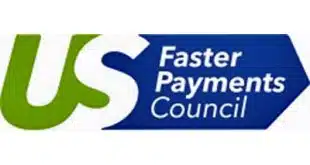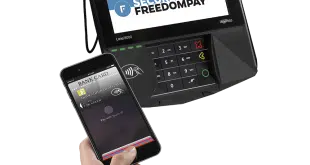The big untold story in payments is how the lumbering ACH network has been posting impressive growth rates quarter after quarter. Is there more than same-day settlement to keep the party going?
Let’s face it, generating anything beyond low-single-digit growth rates can be a challenge when you’re a 45-year-old payment network that moves 23 billion transactions worth $51 trillion in a single year.
So the payments industry took notice when NACHA, which oversees the automated clearing house network, recently reported its 2018 numbers. Total transaction volume rose 7%, the highest growth rate in a decade. Transactions have grown by 1 billion annually for the past four years.
What’s more, the dollar value of 2018’s payments rose 9.5% on an increase of more than $1 trillion—the sixth straight year of trillion-plus increases.
“ACH remains a critical payment type in the United States,” says Elena Whisler, head of global product management for open payments at Jacksonville, Fla.-based processor Fidelity National Information Services Inc. (FIS).
True, the ACH network links virtually every U.S. financial institution, but its ability to generate historically high growth lately surprises even long-time observers. And the party is continuing. Herndon, Va.-based NACHA says volume in February for the first time exceeded 100 million payments per banking day, up 7% from February 2018.
“When we came into 2019, we were gaining some momentum,” says Jane Larimer, NACHA’s chief operating officer.
Jammed Window
The ACH indeed seems to have plenty of momentum lately. But the Federal Reserve put a damper on the high spirits in mid-March when it told NACHA that it wouldn’t meet the planned schedule for implementing a third, late-afternoon daily window for financial institutions to submit ACH transactions.
This third window is an important component of NACHA’s long-term effort to institute same-day clearing and settlements. Now it’s scheduled to go live in March 2021 instead of the originally planned September 2020.
Same-day ACH volumes already are booming without the third window, so the delay’s ultimate effect is unknown. Meanwhile, the ACH continues to sail along with some strong tail winds. Besides same-day ACH, these include the boom in e-commerce and electronic person- to-person payments as part of the ongoing transformation of U.S. consumer payments away from cash and checks.
Then there is the corresponding but slower conversion of business-to-business payments and an anticipated, parallel transformation of health-care payments, currently a mishmash of outmoded processes.
These emerging markets all lie in wait for NACHA—along with its competitors—to exploit. But researcher Tony Hayes, a partner and global head of the payments unit at New York City-based Oliver Wyman, commends NACHA for transitioning well into the world of electronic payments beyond direct deposits, its original franchise, as consumers’ check usage has plummeted in the past two decades.
He notes that ARC, the ACH code for paper checks converted at lockboxes into electronic transactions for bill payments, hit its highwater mark of about 3.8 billion transactions way back in the early 2000s. It then began to dwindle along with the volume of paper checks. That hurt because ARC was a bellwether consumer code for the ACH.
“Every year since then it’s gone down by 200 million transactions,” says Hayes. “To NACHA’s credit, they recognized, ‘what else could we do? What should we do to add value to the overall payment system?’”
What NACHA came up with was the WEB code, the debit version of which handles e-commerce payments drawing on demand-deposit accounts while the credit version takes care of person-to-person payments. WEB debit transactions rose 14% to 5.9 billion last year, with a value of $2.9 trillion. WEB is now the ACH’s second-largest source of transactions, after direct deposits.
“Clearly, the e-commerce business is exploding,” says Hayes. “The rate of growth more than offsets the decline in check.”
While only a fraction of the volume of WEB debits, WEB credits are growing even faster as P2P services such as PayPal Holdings Inc.’s Venmo and the bank-sponsored Zelle gain rapid adoption, displacing the need for consumers to settle personal debts with checks or cash. WEB credit transactions totaled 128.7 million in 2018, up 32% from 2017’s 97.4 million. The value of the transactions grew 30% to $209.7 billion.
“There are increasingly acceptable alternatives to the check,” says John Leekley, chief executive of RemoteDepositCapture.com, an Alpharetta, Ga.-based research and news service focused on the remote-deposit and checking markets.
Hot Topic
Of course, same-day ACH is the hot topic nowadays. Same-day settlement is critical for NACHA. It represents the organization’s effort to meet demand for faster service as everyone from fintech startups to Visa and Mastercard to PayPal and others roll out services that enable payees to get their money faster. The ACH has been grounded in batch settlements that take a day or more to clear.
Same-day ACH credit transactions debuted in September 2016, followed by same-day debits a year later. In 2018, same-day transaction volume rose 137% year-over-year to 177.9 million and the value increased 83% to $159.9 billion.
Last year was the first with complete same-day service. Many banks and credit unions held off on enabling same-day ACH until the full monty was available, according to Larimer.
“What we relearned was that many financial institutions were waiting for both credits and debits [to be] enabled,” she says.
Same-day ACH is likely to continue growing smartly for some time and surely will get a lift when that third window finally opens. But besides the Fed’s delay, other challenges are looming. These days, payments executives and researchers are debating what effect the rise of real-time payment systems might have on same-day ACH.
For example, the Fed itself, which operates one of the nation’s two ACH switches, is mulling taking a direct role in a real-time system. And the other operator, the bank-owned The Clearing House, already has such a system up and running.
Hayes answers “yes” when asked if real-time payments could take a bite out of NACHA’s volumes. With 23 billion payments last year, the ACH can’t avoid attracting rivals.
“That’s a lot of transactions, other people are eying that,” he says.
Faster-payments providers could try to establish footholds in promising growth areas for the ACH, notes consultant Patricia Hewitt of Savannah, Ga.-based PG Research & Advisory Services. “Faster payments may actually make a play at the point of sale,” she says.
Others, however, note that not every payment originator needs instant settlement and will be fine with multiple daily but non-real-time options.
“There’s a lot of synergies between ACH and real-time payments in terms of financial institutions modernizing” their payment applications, says Whisler of FIS. “I don’t necessarily think there’s going to be a lot of volume that’s going to move from ACH to real-time payments.”
NACHA itself has taken a neutral position on whether the Fed should become a real-time payments provider. But Larimer says the Fed should expand the availability of its ACH support services, the Fedwire Funds Service and the National Settlement Service.
“They need to be increasing those hours,” she says.
‘More Aggressive’
Beyond same-day ACH, B2B payments and the related health-care payments market still represent a fertile area for ACH growth despite the fact that businesses—“corporates” in ACH lingo—already moved more than $30 trillion through the ACH in 2018. B2B transactions totaled 3.6 billion, up more than 9% from 2017.
“Corporates are being a little bit more aggressive in moving away from check,” says Larimer.
Vastly more volume awaits conversion. While check use by businesses is declining, the switch to electronic-payment forms hasn’t been as fast as it has been among consumers. Reasons include the more complicated nature of business payments and the need for remittance information beyond the pure payment.
One way to capture more growth is to provide greater resources for billers, including support for invoicing and related transaction data that would move along with the payment. In a little-noticed acquisition, NACHA last October bought the non-profit Business Payments Directory Association.
The Roseville, Minn.-based BPDA was formed in 2016 to develop a database, or what it calls a public phone book, of business payees and payee information.
Not long before the acquisition, the BPDA began working with Discover Financial Services on a proof-of-concept platform for a directory built on blockchain technology. The database will allow payers to find the information needed to make payments to their payees electronically.
“It is going to help with onboarding, allowing for straight-through processing, reducing the areas of friction in today’s business-to-business payments,” Larimer says. “It’s really an efficiency for one directory to query another directory saying, ‘do you have information on this biller?’”
Larimer expects the project to move into an actual test later this year.
Health-care providers, meanwhile, increasingly are turning to electronics. Health-related payments are included in NACHA’s B2B transaction codes.
“Sixty-three percent of medical practices receive claim info electron- ically, up from 50% five years ago,” says Larimer. “I do think that push to move from paper to electronics is having some benefits.”
It’s not assured that every initiative will work out, but NACHA certainly is better off trying new things than standing still.
“Clearly there have been risks in the past,” says Hayes. “There are new risks today. The question is … how well will they evolve now in order to remain relevant for the future?”
Check back in a few years for the answer.
Same-Day ACH’s Third Window Will Open Later Than Expected
It’s taken years to get same-day ACH to get to where it is now, so what’s another six months?
A third daily processing window for same-day clearing and settlement of automated clearing house transactions is now scheduled to go live March 19, 2021, six months later than the originally planned Sept. 18, 2020.
The window is a key component of ACH governing body NACHA’s multipronged same-day ACH effort. NACHA says the reason for the delay lies with the Federal Reserve, operator of one of the nation’s two ACH switches; bank-owned The Clearing House Payments Co. operates the other.
The original live date depended on NACHA receiving okays from the Fed’s Board of Governors by June 30 of this year. The Fed informed NACHA in mid-March that it will be unable to provide needed approvals for changes in its ACH services, including the Fedwire Funds Service and the National Settlement Service, by then. The Fed hasn’t yet scheduled a required public-comment period.
“They’re not going to be able to meet our timeframe,” says NACHA chief operating officer Jane Larimer.
NACHA’s 2018 rule for expanding same-day service calls for a six-month delay in such an event.
A Fed spokesperson says by email that “Federal Reserve staff are actively working on a Federal Register notice to seek public comment and, subject to board-member approval, expect to have it out relatively soon.”
Once it goes live, the additional window will give financial institutions until 4:45 p.m. Eastern time to submit transactions to the network. Banks, especially those in the Mountain and Pacific time zones, strongly endorsed the change.
It’s unclear how much of a setback the window delay represents for same-day ACH. It comes at a time, however, when payments providers of all varieties are trying to speed up their services. On the day news of the delay broke, PayPal Holdings Inc. added a new service called Instant Transfer to bank, with JPMorgan Chase & Co. and The Clearing House as partners.
“In light of today’s announcement by PayPal that they’re enabling instant money transfer via Chase and TCH, this is bad timing,” says consultant Patricia Hewitt of Savannah, Ga.-based PG Research & Advisory Services.
And the Fed itself is mulling whether it should take a direct operational role in a real-time payments system, a system some observers believe could compete with the ACH.
But Larimer expects the delay will have no lasting effects.
“In 2018, there were 178 million same-day transactions, an increase of 137% over 2017,” she says by email. “NACHA anticipates little impact to continued adoption and usage of same-day ACH.”




